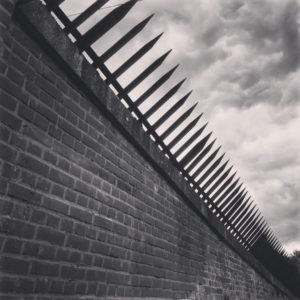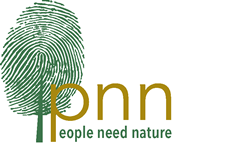Continuing our series of posts after our expedition to Lodge Hill in Kent, This piece comes from People Need Nature trustee Keith Datchler.

Photo: Matt Shaw
After our day at Lodge Hill, I surprised myself at how much I brooded over the day when I got home, to the extent of waking in the night churning over just how I felt about it.
Although the Nature there is diverse and interesting it’s very specific in a way I had not encountered before. Reflecting on it afterwards it was the sense of a recovering war zone that overwhelmed me, which is pretty much exactly what it was! The area had that association with war, destruction, manufacture of ordnance intended to kill and destroy. There was an odd, very flat dispassionate atmosphere around the IRA village houses (not homes). I had never witnessed houses constructed solely as structures, soul-less buildings designed to train people for war, killing and, adversely, how to survive in such circumstances. Chillingly hard-edged, they were a necessary installation ..
Obviously we arrived on site some time after its last deliberate use for its original purpose. Thank goodness, nature has started her work. The edges are softening; the place is healed to an extent, although the scars are evident; concrete, tarmac, derelict structures.
I like the slow reversion, rather like grieving – not wanting to forget, unable to, even. Yet to move on, recovery is essential. This begs the most important question ~ how?
One option is the one being considered: Housing.
Creating a community maybe not such a bad thing – people need homes as well as nature. There are all the usual options to include green spaces, installations, reflecting the sites previous use etc.
We talked about how it should be used if it were not developed into housing; I think this is actually more of a challenge.
We cannot truly leave it to nature because as soon as we introduce management of any kind, which includes the perimeter fence, this is intervention. So is leaving it to nature even possible? Probably not. Therefore it has to be a management plan of one sort or other. We touched on the options; hands-on almost micro management to maximise diversity. We talked of a less intense approach, bringing in grazing animals at various levels to hold open spaces. Then there’s the Knepp approach, along with everything in between.
What do these different approaches do for the site’s heritage or legacy? Not much I suspect though it does make it people-friendly, if the Health & Safety requirements could ever be met.
Having thought on it, I would leave it to Nature. Perhaps more correctly “give it back to nature”, opening the buildings to wildlife, “hands-off” and people out. The site has served humanity, saved lives, protected the realm. Time to leave it alone.
That said, the two large warehouses could become a living exhibition of the site as it evolves through time.
Leave them dark brutal spaces, hung with giant TV screens that monitor the area in living time. Visitors could sit, have a coffee and see what is happening. Let nature speak for itself in its own voice and language, if left to its own devices (except for the fence)
Radical? Maybe. Disengaging in a way, but perhaps this would underline the need for nature and its healing qualities in all our lives.
In 1810, Wordsworth, when he was considering the countryside/nature (The Lake District in particular for him obviously) wrote about a direct sense of “Ownership” in real terms – nothing to do with property rights or deeds. He believed these places should belong to us all simply because they are beautiful, or stimulating.
“a sort of national property, in which every man has a right and interest who has an eye to perceive and a heart to enjoy”
Given that when he wrote that there wasn’t a single National Park or reserve anywhere in Britain – or the World for that matter, it’s an incredibly modern vision for us all.

Comments are closed.